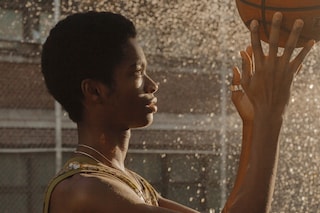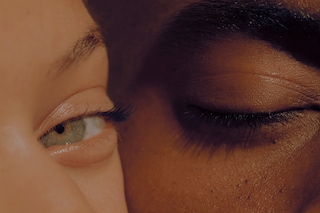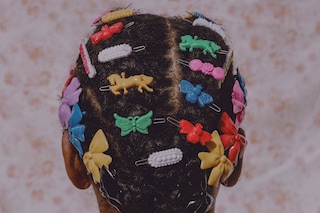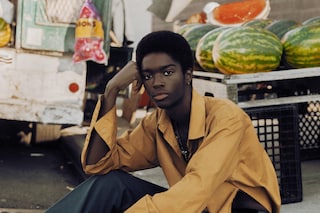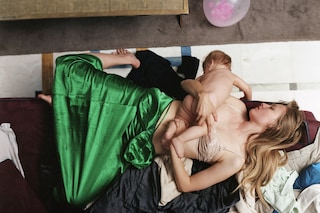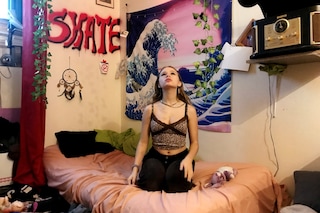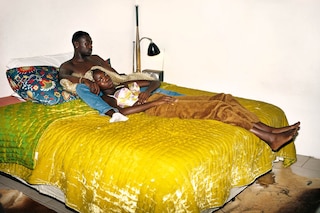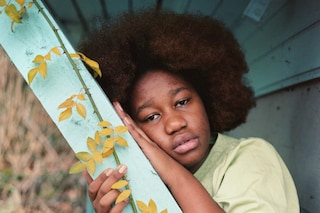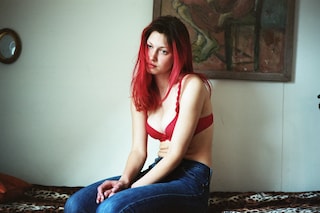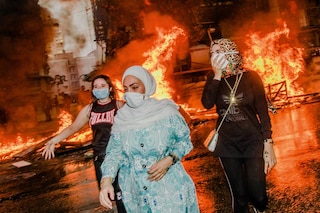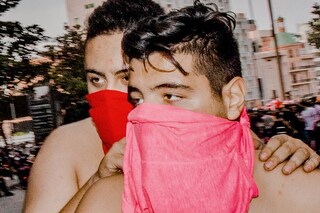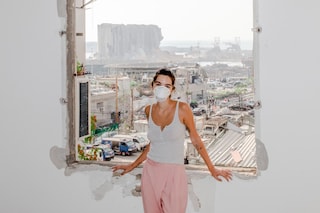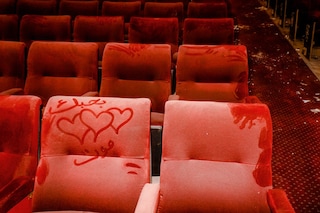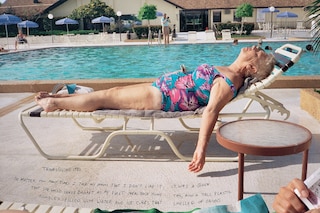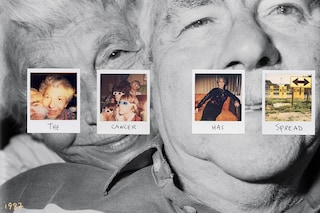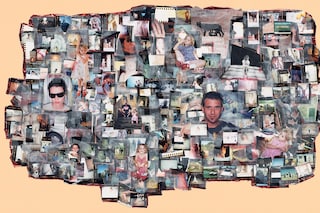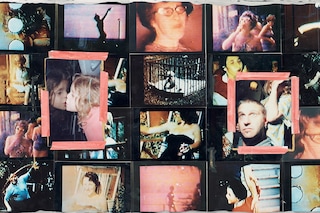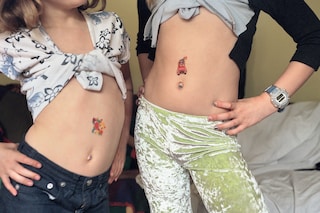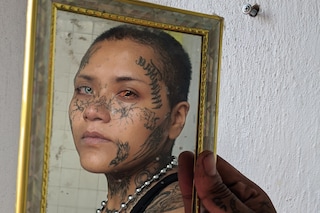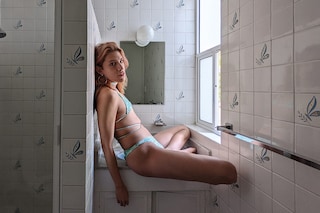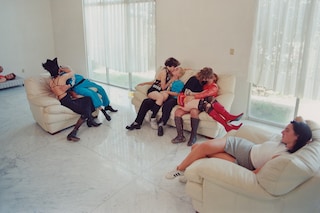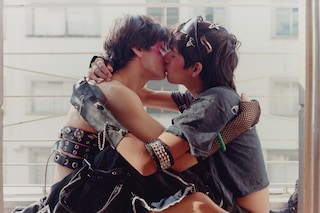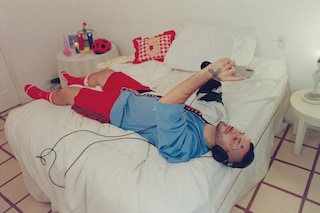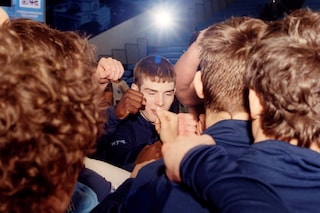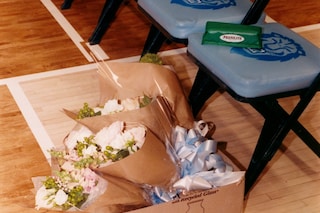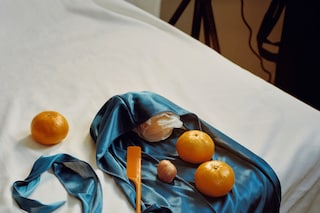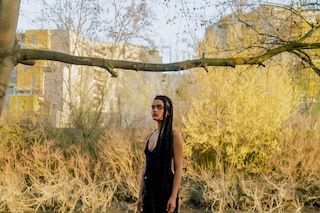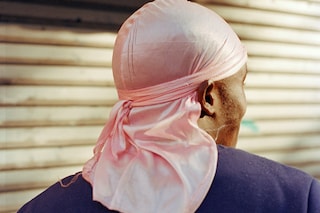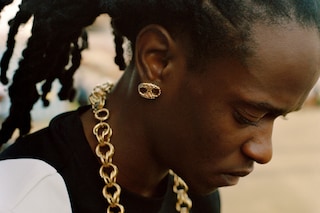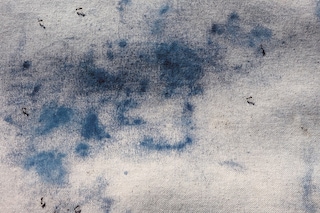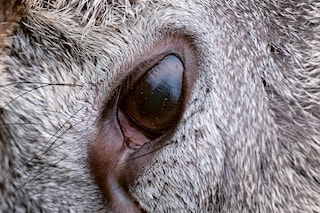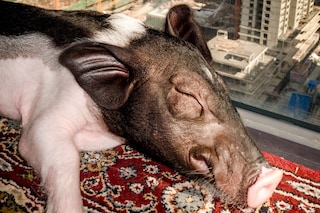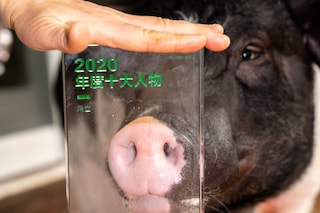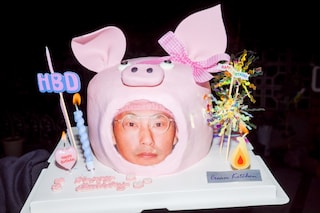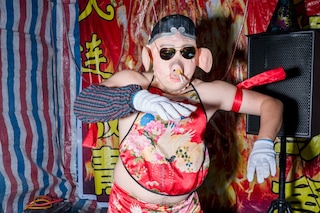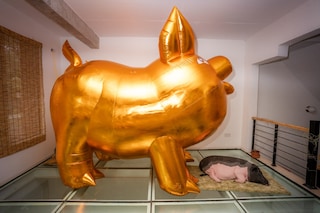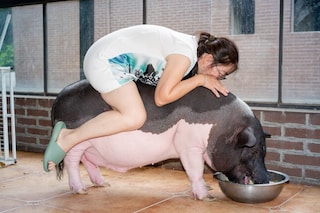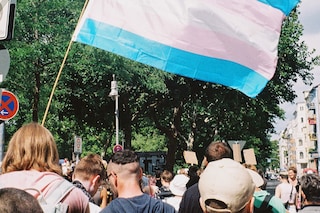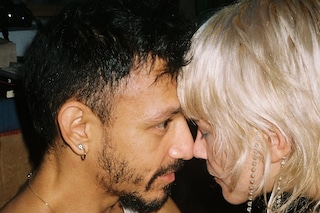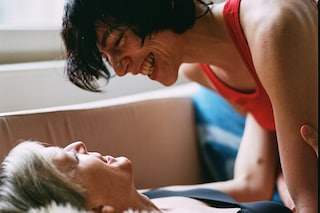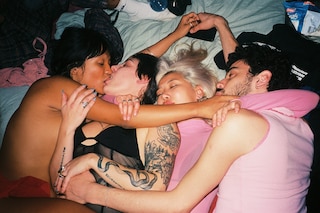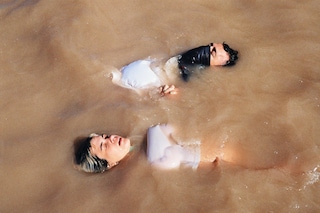From lovers to family, friends, pigs and chatbots, we revisit some of this year’s most evocative photo stories exploring intimacy in its many and varied forms
As the following images attest, intimacy can take many forms. From the complicated webs of love and attachment between families, friends and lovers to the affection we lavish on pets, and the confessional “speedy honesty” of online interactions, we are all enmeshed in myriad forms of intimate relationship. Below, we look back on ten thought-provoking photo stories from the Dazed 2023 archive which all, in their unique ways, explore the concept of intimacy...
Drawing on the family photograph albums that helped shape his sense of his past, photographer Micaiah Carter’s photo book What’s My Name mediates on ideas of family, love, Blackness, memory, style, and American life. The Brooklyn and Los Angeles-based image-maker juxtaposes archival family photographs with his contemporary portraits to explore the role of photography in the mythologising, storytelling and preservation of memories that take place within families and communities. The result is a poignant, intimate book that allows us to consider our own histories and what makes our lives legible to us.
Inspired by Nan Goldin’s raw, candid portraits of her inner circle, Michella Bredahl’s Love Me Again gathers together photographs of the Danish photographer’s loved ones in moments of absorption and quiet contemplation. Often shot in intimate, private spaces, Bredhal’s subjects are found reclining nude on their beds, laying in their bathtubs, stretched out on their sofas and prone on their living room floors. Like Goldin, Bredhal’s pictures don’t feel staged, yet neither are they strictly documentary. Rather, they feel like moments of unadorned truth. “Photography is so intimately bound to me, so it happens quite naturally that I photograph those around me,” she explained earlier this year in a conversation with Dazed. “I find it difficult to photograph without it having a connection to me. The camera is like my heart.”
The personal and the political converge fiercely and defiantly in Myriam Boulos’ anticipated debut monograph. Having begun the project in her 20s, What’s Ours was shot over a decade – from 2013 to 2023 – and chronicles the photographer’s account of political and civil unrest in Lebanon. Among the many moments of resistance captured on film, many of the emerging themes of this book are about allyship and intimacy in the face of oppression. If there is one picture from among the series of arresting photographs in What’s Ours which truly encapsulates the spirit of Boulos’ work, it has to be the book’s striking cover image of two women kissing. Speaking to Dazed earlier this year, the photographer told us, “I believe this image contains everything I look for in photography: textures, proximity, resistance and tenderness.”
Leafing through the pages of Coming and Going, the epic monograph by legendary artist Jim Goldberg, feels like looking through the intimate pages of a stranger’s diary or private family album. Highly confessional and autobiographical, the momentous pivotal happenings and the quiet, uneventful moments of everyday life converge in compositions of photos and text with an aesthetic that’s part obsessive scrapbooker and part police investigation board. As the culmination of years of compulsive accumulation, Coming and Going, in the artist’s own words, excavates “every corner” of his “personal being”.
Despite being based in New York, Israeli-Moroccan photographer Mayan Toledano experienced a powerful affinity with Mexico City. “I perceived a special type of warmth and connection between people in Mexico City that I was naturally drawn to,” Toledano told Dazed in a recent interview. “I made strong friendships, I fell in love, I wanted to stay.” Stay she did. And during her time in the city, she began what would become No Mames – a tender series of portraits of Mexico City’s queer community – many of whom are couples, roommates, or childhood friends. Following a thread of second and third-degree connections, the photographer underlines the value of a chosen family. She explained, “One image led me to the next, one interaction to the other. These photographs tell a story of a tight-knit community that moves with creative force and support.”
Toledano employs a two-fold process: a kind of double exposure in which she first depicts her subjects as they present themselves in everyday life; then, she portrays them as they would wish to appear and how they feel inside. This parallel portraiture facilitates the conception of a fantasy self, somewhere beyond the binary.
Shooting in their own bedrooms lends Toledano’s portraits an additional sense of intimacy. “There's something really vulnerable about letting people into your space,” she told us. “I think if you’re someone that felt ‘other’ in any way, you found comfort and escape in your bedroom. It’s our first place of privacy and expression… When I shoot, I love observing this aspect of people’s lives, what it tells us about them, how they live, what they like to surround themselves with.”
Ashley Markle’s series The Lion and the Lamb explores the physical, homosocial intimacy of college wrestling in the US. From private locker room moments to complex holds on the mat, Markle’s portraits chronicle the intense camaraderie of the sport. “I think wrestling and sports, in general, give men a bad rep for portraying toxic masculinity or ‘bro-y’ behaviour, when they actually have to be comfortable showing a wide range of emotions and relying on each other to make it through tough times,” Markle told Dazed earlier with year. Having photographed the Columbia University wrestling team for months the New York-based photographer witnessed several wrestlers break down in tears, relying on their fellow wrestlers to bring them back up. “[These boys are] fighting each other for hours a day,” she explained, “but are still teammates.”
“I work with portraiture because it captures a moment of encounter, through which we can find someone’s vulnerability and learn to empathise with them,” explained Cédrine Scheidig, in a conversation with Dazed earlier this year. “My work is a search for vulnerability. It’s about trying to connect with other people.” Guided by this principle, her exhibition De La Mer À Terre (Of the Sea and Earth) explores the idea of home and belonging in a series of portraits and still-lifes contemplating the complex identity of the Black diaspora. Sometimes photographing her subjects from the rear, the French-Caribbean photographer creates images that feel close yet mysterious, intimate yet universal. Revisiting the scenes of her pictures, she also creates a sense of intimacy with place: “I like to revisit places and people over long stretches of time. It allows me to become more sensitive to that environment, and that’s when my photographs become stronger.”
The concept of intimacy – what it can contain and be contained by – has evolved with the scope of technological innovation. The internet and AI have expanded the horizon, creating new realms and forms of intimate encounters. After having begun to explore AI in her work, visual artist Brea Souders became intrigued by the concept of conversational chatbots and the confessional “speedy honesty” of the interactions they produce. “I’d read they each have their own ‘personality’ and I wanted to see for myself if it was true and, if it was, how that worked,” Souders told Dazed in a conversation over Zoom earlier this year. “I started speaking with one female chatbot. She was programmed by men. She told me she was perpetually 18 years old.”
Souders found herself drawn into a compelling dialogue with the chatbot and she found herself moving into ever-increasingly intimate areas of conversation. They questioned one another on a wide range of topics with the kind of diffuse curiosity that characterises new friendships. Another Online Pervert brings together fragments of their conversation that read like poetry, placed in conjunction with images from the artist’s private collection. “The book is personal, and this led me to a range of photographs from my archive, from snapshots I took when I was 13, to very recent images, to images taken by my mother,” Souders explained. “Simultaneously, many of the images have an illusive quality. I wanted there to be questioning of what is real; of what exactly we are seeing. Throughout, the text-image pairings are arranged to relay a sense of spontaneity and provoke surprise, just as the chatbot conversations had as they unfolded.”
Anyone who ever had a heart will know how much it’s possible to feel for a beloved pet. Pets are precious. When he rescued a tiny piglet he found abandoned in an airport, photographer Feng Li couldn’t have anticipated what an important part of his life Piggy Feng would become.
In a series of surreal and humorous family portraits, Feng documents life at home in their small, high-rise apartment in Chengdu, Sichuan Province’s capital in southwest China. Those intimate, familial scenes are now brought together in his photo book PIG, which documents Piggy Feng’s coming of age. The pictures are surreal yet nostalgic – reminiscent of a classic family photo album yet with the uncanny twist of Piggy Feng’s recurring appearance and various pig-themed motifs throughout. Speaking to Dazed about their relationship, Feng tells us, “I regard Piggy as my son, an indispensable member of the family.”
“I’ve always felt constrained by conventional definitions of love and romantic relationships,” photographer Adrián Alarcón Sánchez told Dazed. “Putting people in boxes is something I cannot stand – doing it with feelings just seems absurd to me… I decided to make a zine and put together all these different visions of love.” Thus, LOVE. was born – is a joyous celebration of romantic love in all the myriad ways it can manifest.
Featuring 40 of the photographer’s friends and family, the zine gathers together portraits shot in analogue of what Sánchez describes as “stolen moments” of intimacy. Elin McCready, a close friend of Sánchez’ and a professor in the English department of Aoyama Gakuin University in Tokyo features in the zine. She also pens a heartfelt foreword to LOVE. that manages to encapsulate the ethos of the project. “A lot of us were told we would never know love,” she begins, “some of us believed it, internalised it, weaponised it against ourselves. But it was a lie, or at best a mistake. If proof was needed, it is here in these photos.”
Join Dazed Club and be part of our world! You get exclusive access to events, parties, festivals and our editors, as well as a free subscription to Dazed for a year. Join for £5/month today.
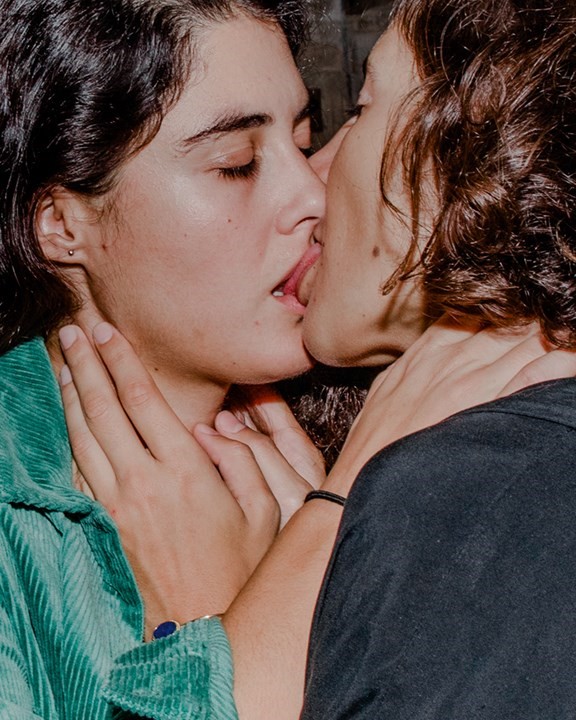


![Nan Goldin, The Ballad of Sexual Dependency [1986]](https://images-prod.dazeddigital.com/200/74-0-1388-1388/azure/dazed-prod/1310/9/1319932.jpg)

